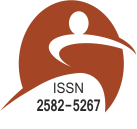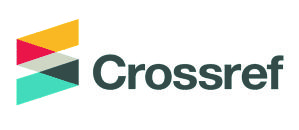Instructions to Authors
Online Submission
Manuscripts should be in English. They should be written clearly and concisely. The papers will be refereed within one week to one month after submission.
Terms of Submission
Papers must be submitted on the understanding that they have not been published elsewhere and are not currently under consideration by another journal published by any publisher. The submitting author is responsible for ensuring that the article's publication has been approved by all the other co-authors. It is also the author's responsibility to ensure that the articles originating from a particular institution are submitted with the approval of the necessary institution. Only an acknowledgment from the editorial office officially establishes the date of receipt. Further correspondence and proof will be sent to the author(s) before publication unless otherwise indicated. It is the condition of submission of a paper that the authors permit editing of the paper for readability.
Peer Review
All manuscripts are subject to peer review and are expected to meet standards of academic excellence. Submissions will be considered by an editor if not rejected by peer reviewers, whose identities will remain anonymous to the authors.
Title and Authorship Information
The following information should be included: Paper title, Author's full name, Full institutional mailing addresses and Corresponding author's email address.
Abstract
The manuscript should contain an abstract. The abstract should be self-contained and citation-free and should not exceed 200 words. The abstract should state the purpose, approach, results and conclusions of the work. The author should assume that the reader has some knowledge of the subject but has not read the paper. Thus, the abstract should be intelligible and complete in itself (no numerical references); it should not cite figures, tables, or sections of the paper. The abstract should be written using third person instead of first person.
Abstract format varies as follows:
Review articles: Abstracts need not be structured.
Clinical and basic research studies: It must have structured abstracts of no more than 250 words. Abstracts must be written in third person. Abstracts for clinical studies should have the following subheadings: Background, Objectives, Methods, Results and Conclusions.
Laboratory studies and new apparatuses and techniques: A shorter form is requested. These abstracts should have the following subheadings: Background, Methods, Results, and Conclusions.
Preliminary/short communications and case reports: An unstructured abstract of no more than 150 words is required.
Keywords: Five key words (for the purposes of indexing) should be supplied below the abstract, in alphabetical order.
Releases
If any material in the manuscript is from a prior copyrighted publication, the manuscript must be accompanied by a letter of permission from the copyright holder. However, we prefer not to publish figures that have been published elsewhere. If applicable, permission to use unpublished data and personal communications must be included.
Text
Do not submit papers written with editors other than MS Word or Latex as they will not be accepted for review. Save the files compatible with many versions of MS Word (avoid document extension other than *.doc, *.docx or *.rtf). Do not submit papers without performing a careful spell check and an English language grammar check.
Articles written in poor English will be rejected without any scientific review. Any article which does not meet the writing guidelines will be rejected. Any articles that have been plagiarized will be rejected, and the authors will be banned from publishing in the journal.
Use correct symbols for physical or technical terms. (Example: ε0 and not ε0 for permittivity). Do not repeat definitions throughout the article. Refer to already defined symbols, equations, theorems by using the cross reference number (Example: As pointed in (1)…).
Authors should use subheadings to divide the sections of their manuscript: Introduction, Methods, Results, Discussion, Acknowledgements and References.
Headings and format
Sections and subsections should be numbered as 1, 2, etc. and 1.1, 1.2, 2.1, 2.2 respectively. Capital letters should be used for the initial letter of each noun and adjective in the section titles; the section should be formatted as left, bold, Times New Roman, and 14pt font size. For subsections (left, bold, Times New Roman, and 12pt), the initial letter of the first word should be capitalized and also similarly for other sub-subsections (left, bold, Times New Roman, and 10pt).
Figures, photos, tables and equations
A table, figure, equation, and the corresponding text which is describing it should be placed on the same page. Otherwise, it may be placed on the page immediately following it. One page may contain images not more than 2/3 of its entire content. Do not add multiple or irrelevant photos in your article. Photos must be crystal clear with high resolution to allow visibility of fine details. If necessary, put two figures on horizontal arrangement. The elements from any photo must be explained using numbers, letters, etc. The text within a figure or photo must have the same style, shape and height as the caption.
Any table, figure or picture must have a caption (Fig.1, Table 1, etc.) followed by a proper description. (Example: Fig.2. The experimental setup: 1-Agilent E8257D signal generator, 2-antenna, 3-16dB attenuator)
All similar graphics must be generated using the same software (Excel, Origin, Mathematica, etc.). Importing graphics into the article as images (JPG, BMP, PNG, etc.) should be avoided. All similar electronic schematics, charts, program flow, simulated characteristics, etc. from the article should be generated using the same software product. Importing images from other articles or books is forbidden unless they are cited.
Labels of figures and tables
A figure or photo should be labeled with "Fig.” and a table with “Table” and it must be assigned with Arabic numerals as a figure or a table number; the figure number and caption should be placed below the figure or photo. The first letter of the caption should be in capital letters. (Example: Fig.1) The first letter of the description following it should be in capital letters. (Example: Fig.1 The experimental setup.) The table number and caption should be placed at the top of the table. Use Table 1 format as a model for your tables. Be careful to keep the same aspect for all the tables in the article despite the number of columns.
Figures and tables should be placed in the middle of the page between the left and right margins. More than one figure or one table is accepted on horizontal arrangement for efficient use of space. Reference to the figure in the text should read "Fig.” instead of “Figure.” Figures and tables should be sized as they are to appear in print. Check the visibility of your figures, tables or pictures by creating a press resolution PDF with at least 3600dpi. Articles with figures or tables incorrectly sized will be returned to the author for reformatting.
Main results
Focus on original results and discuss those results compared with results from references. You can also compare simulations with experimental results. Do not compare simulations with other simulations if you do not have a very good reason to do so. Do not expect the reader to search for your results throughout the article and references. Do not present results as a well-known theory. A good result may contain only a good explanation of your novel idea, a measuring methodology, a design or all of them. Be specific naming your results: the results are purely theoretical, simulations, simulations followed by experimental measurements, experimental measurements followed by manufacturing prototypes, etc.
Conclusion
In this section, you should present the conclusion of the paper. Conclusions must focus on the novelty and exceptional results you acquired. Allow sufficient space in the article for conclusions. Do not repeat the contents of Introduction or the Abstract. Focus on the essential ideas of your article.
Acknowledgements
This is a text of acknowledgements. Do not forget people who have assisted you with your work. Do not go overboard with your appreciation. If your work has been paid for by a grant, mention the grant's name and number here.
References
Do not use any title for the authors (PhD, IEEE member, etc.). Do not forget the page number when citing from books or review articles with many pages. Always at the end of the reference, if the article is available online add, “available online: http://xxx”. Check the link of the web address for consistency. Use at least 10-20 reference papers in your article, make sure they are well chosen with respect to the article's content. Cite the references in ascendant order starting with [1]. Do not copy the text from reference in your paper without using quotes.
Authors are responsible for ensuring that the information in each reference is complete and accurate. All references must be cited using Arabic numerals in the order in which they appear and citations of references in text should be identified using numbers in square brackets (e.g., “as solved by Smith [5]”; “as solved elsewhere [9, 10]”). All references should be cited within the text; otherwise, these references will be automatically removed.
List all authors, but if the number exceeds 6, list only the first 3 authors followed by et al. Please follow the format and punctuation shown in the following examples:
Journal Articles: Initials and last name of authors, title of article (capitalize only the first word, proper names, and abbreviations normally capitalized; no quotation marks), journal title, volume, issue number, year of publication, inclusive page numbers.
Example:
B. Batiha, M.S.M. Noorani, I. Hashim, Numerical simulation of the generalized Huxley equation by He''svariational iteration method, Applied Mathematics and Computation 186 (2007) 1322-1325.
Books: Initials and last name of authors, title of book, edition number (if after first edition), publisher, city and country of publisher, year of publication, page numbers (only if specifically cited).
Example:
A.H. Nayfeh, Perturbation Methods, John Wiley, New York, 1973.
Book Chapters: Initials and last name of authors; title of chapter, title of book, etc.
Example:
K.E. McCash, Applying critical thinking to the nursing process, Medical Surgical Nursing-Assessment and Management of Clinical Problems. St. Louis, MO, USA: Mosby Inc, 2005; 3–13.
Online References: Author(s), if given; title of the specific item cited (if none is given, use the name of the organization responsible for the site); name of the website; full URL; date published; date the website was accessed.
Example:
American Association of Critical-Care Nurses. Moral distress position statement. http://www.aacn.org/WD/Practice /Docs/Moral_Distress.pdf. Revised August 2008. Accessed December 18, 2011.
Proofs and Reprints
Electronic proofs will be sent (e-mail attachment) to the corresponding author as a PDF file. Page proofs are considered to be the final version of the manuscript. With the exception of typographical or minor clerical errors, no changes will be made in the manuscript at the proof stage. Because AJAST will be published online, authors will have free electronic access to the full text (PDF) of the article. Authors can freely download the PDF file from which they can print unlimited copies of their articles.
Publication Fees
| Manuscript | Indian Authors | Foreign Authors |
| Students | INR 1000 | USD 30 |
| Academicians | INR 1000 | USD 30 |







